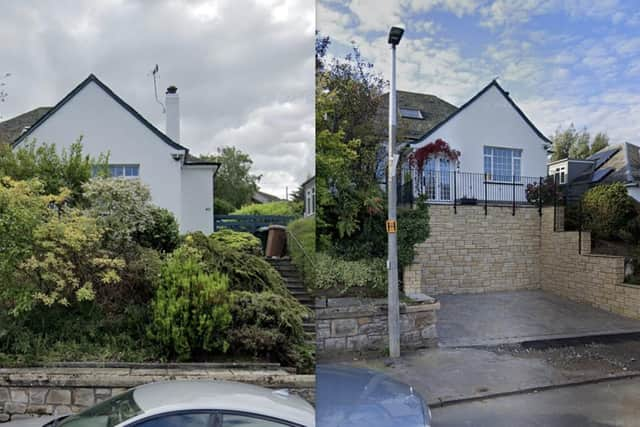Edinburgh man ordered to rebuild wall he knocked down to create driveway at Ladysmith Road home
and live on Freeview channel 276
An Edinburgh man will be ordered to rebuild a wall he knocked down to create a driveway brick-by-brick and undertake significant works to reinstate his front garden.
David Lynch removed nearly 50 cubic metres of soil and vegetation from the sloped garden of his Blackford home to make way for parking spaces without permission – and now the council has ruled it should all be put back after an application made retrospectively was turned down.
Advertisement
Hide AdAdvertisement
Hide AdCouncillors who reviewed the plans this week after an appeal was lodged acknowledged rebuilding the boundary wall and garden would come at a “significant expense” however said the works carried out were “egregious” and he should have obtained full planning consent first.


The excavation, wall removal and construction of the car run-in for the Ladysmith Road property was completed last year, and Mr Lynch claimed work only began after he was told by planning officers it would be a ‘permitted development’ requiring a simple certificate of lawfulness.
In an appeal statement he said officials subsequently informed him as work had already started a full application for planning permission would be needed – before being told again by a separate planner a lawfulness certificate would be enough. After this was refused, Mr Lynch’s retrospective plans were submitted and also thrown out.
The council concluded the works were “not compatible with the existing dwelling and surrounding neighbourhood character”. Mr Lynch said the judgement of council planners had been “inconsistent” during the process and added “a subjective interpretation of policies” was applied by them.
Advertisement
Hide AdAdvertisement
Hide Ad“We have, throughout this long process, sought to do the right thing; seeking and taking advice from planning and roads departments, to ensure we complied with planning regulations,” his appeal stated. The fact that it is now sixteen months since we began the process and the situation remains unresolved has caused us considerable stress and anxiety.”
Edinburgh council planning officer Gina Bellhouse told the local review body on Wednesday, September 27 a decision to uphold the refusal would see the authority “asking for the land to be returned to its original form”.
Councillor Amy McNeese-Mechan, SNP, said: “I actually find the extent of this quite shocking. I’m a bit surprised there had been no comments by neighbours. The fact that many cubic metres of soil have been removed, I’m just worried about the impact of water run-off, I’m worried about the impact on neighbouring properties to be honest. I would be upholding the decision and asking this to be returned as closely as possible to what had been there before.”
Councillor Jo Mowat, Conservatives, said: “I think it’s always quite difficult when someone has commenced work and you know that the enforcement process is going to kick in.”
Advertisement
Hide AdAdvertisement
Hide AdHowever, she added: “This is such an egregious intervention. This was their front garden which was a sloping and rockeried front garden that they have chosen to hack out and stick in a very, very obvious run in which is very visible because of where it is on the road so I don’t think we’ve got any other option other than to uphold the officers decision in this, because it is so incredibly visible.”
Lib Dem councillor Alan Beal said the “whole point” of the planning process was to stop people doing things that breached policy, adding: “Here it’s clearly in breach of all of it.”
Councillor Chas Booth, Greens, said: “This could have been remedied if the applicant had applied for planning permission. While I have sympathy that the applicant may have significant expense at rectifying this problem, this is what planning is here for and they should have submitted the application before they did the work.”